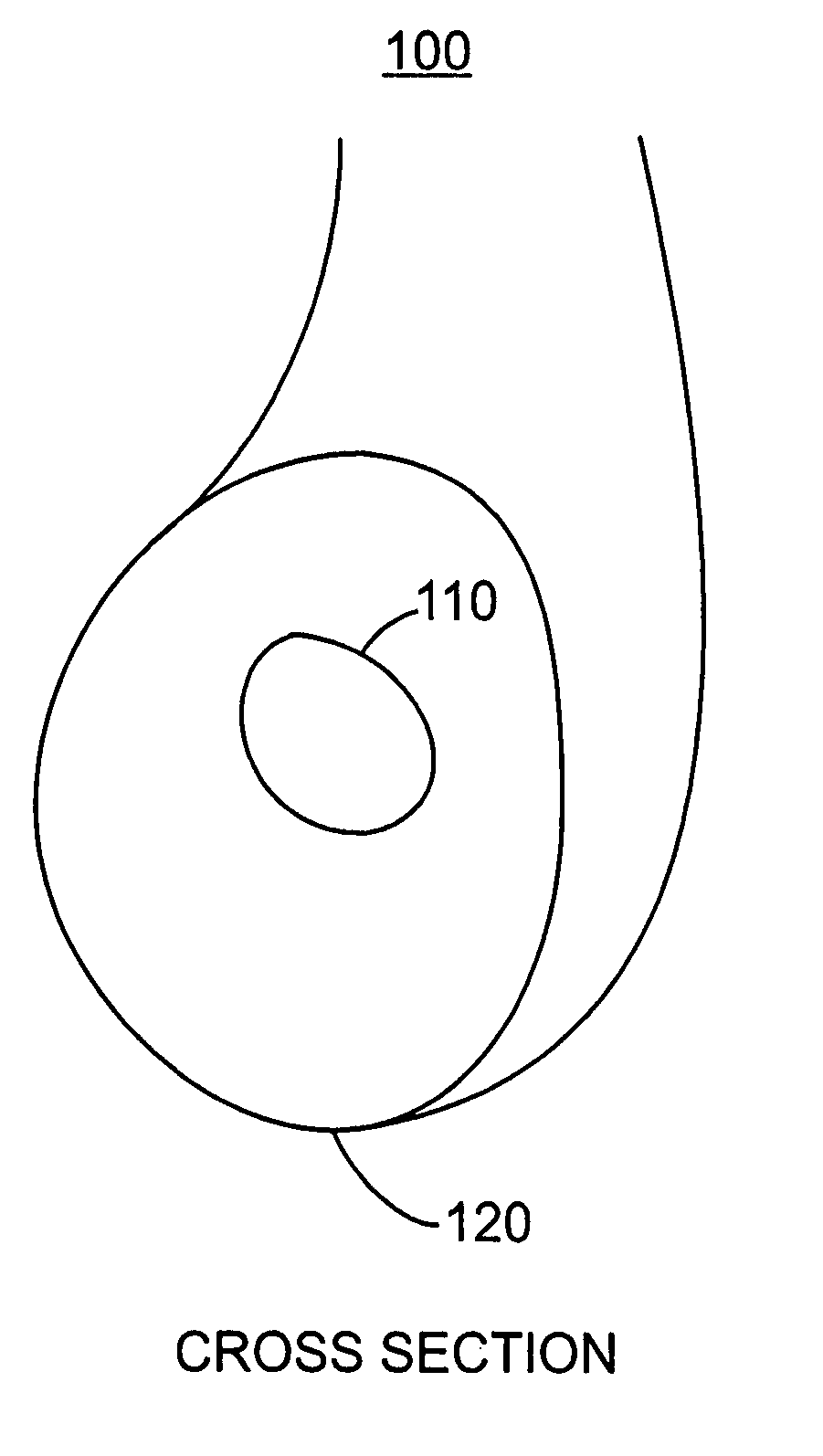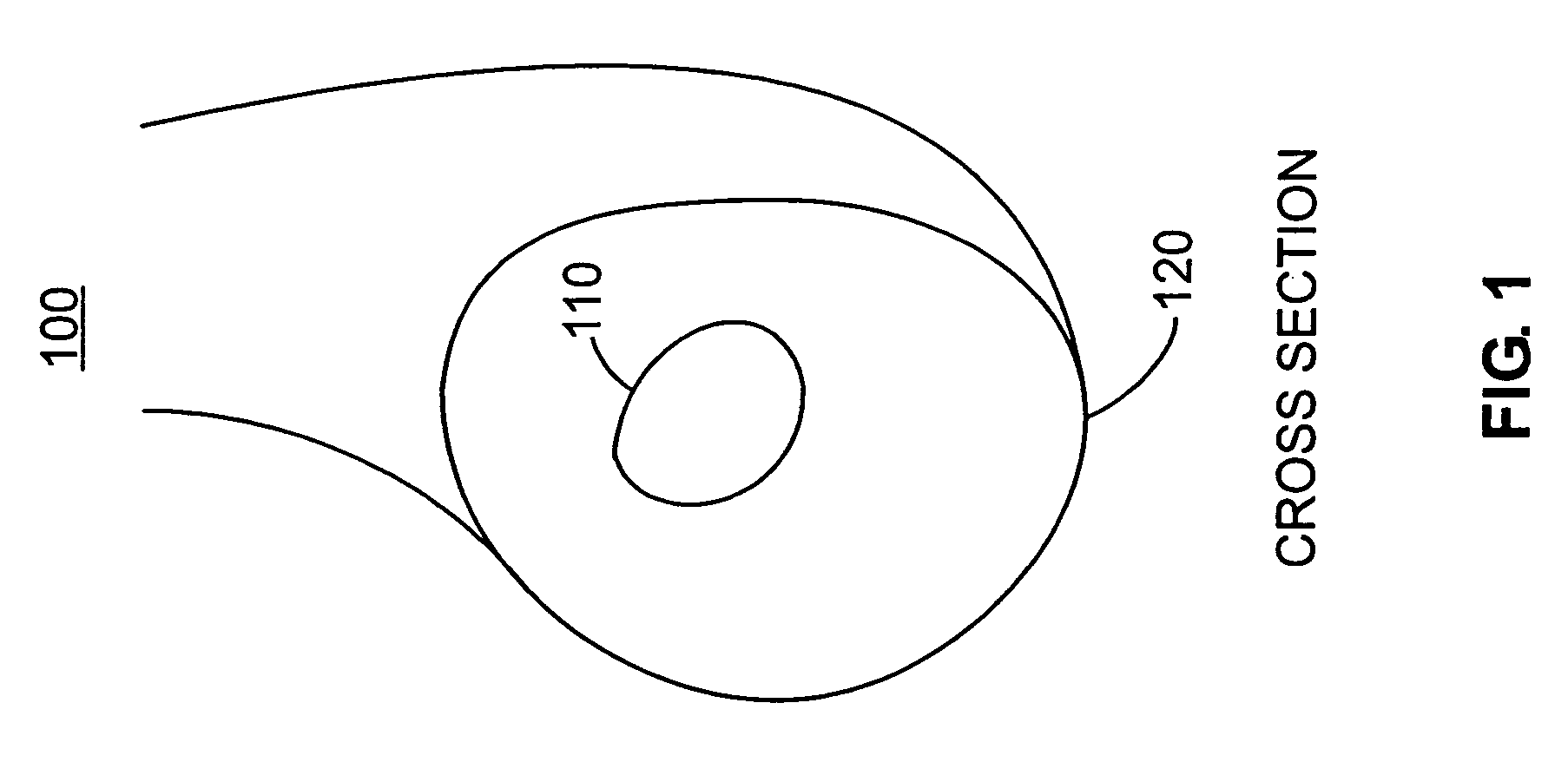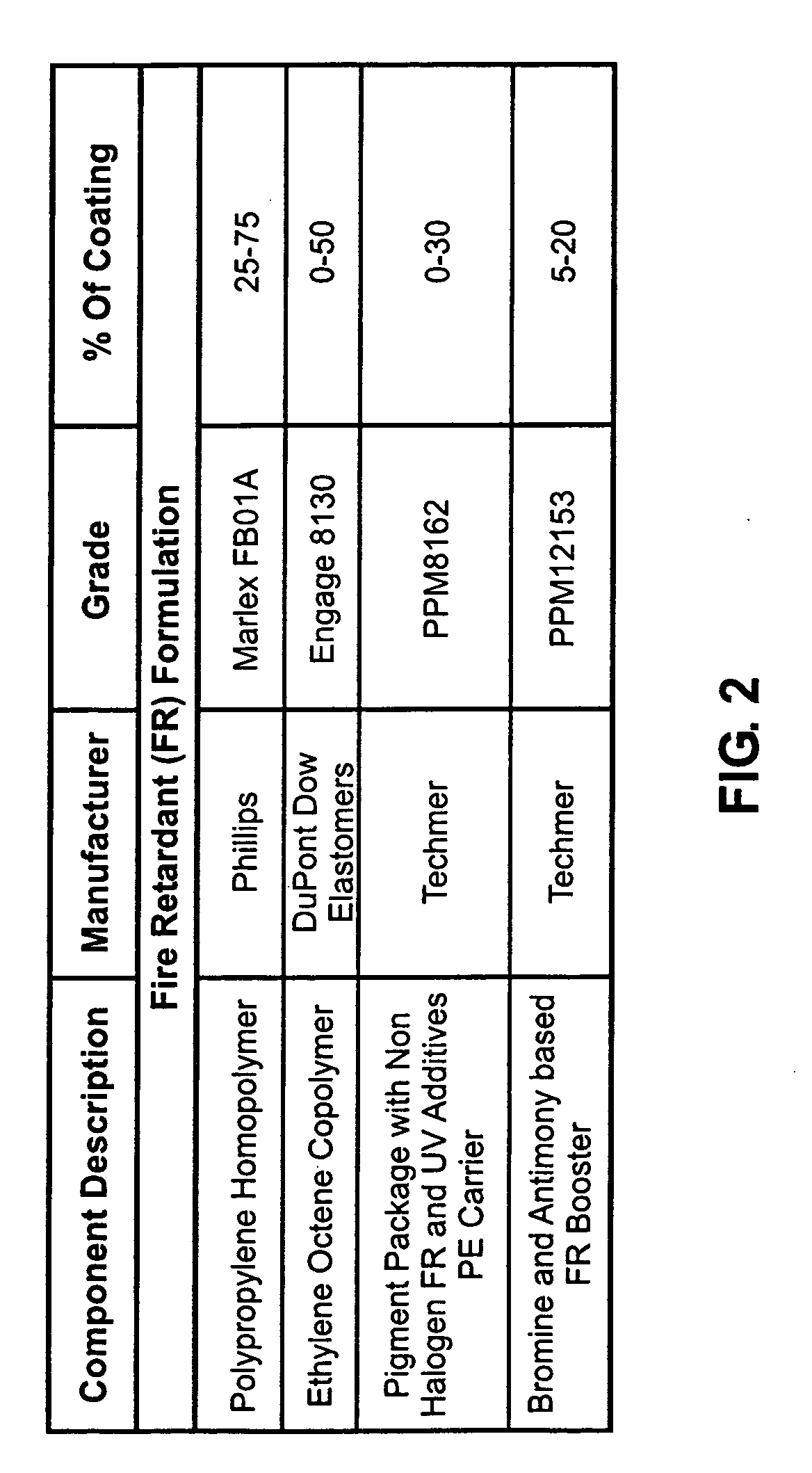Environmentally friendly yarn and fabric
a technology of yarn and fabric, applied in the field of environmental protection yarn and fabric, can solve the problems of unrivaled, unrecyclable pvc based shade products, unsanitary, etc., and achieve the effect of overcompensating potential health risks
- Summary
- Abstract
- Description
- Claims
- Application Information
AI Technical Summary
Benefits of technology
Problems solved by technology
Method used
Image
Examples
Embodiment Construction
[0030]FIG. 1 shows a cross-section of an environmentally friendly yarn in a first embodiment of the invention. As shown in FIG. 1, a monofilament or multifilament core yarn 110 is preferably coated by a synthetic polymeric coating material 120. Core yarn 110 may be any number or size of yarn, but preferably comprises a 300 denier, high tenacity multifilament polypropylene core yarn with a flame retardant additive, such as Bridge Line YMH0160-300 / 72FR. The core yarn may alternatively be 100% polypropylene, or may consist of any combination of propylene or ethylene based compounds, olefin compatible polymers (i.e., may be recycled and bonded with olefin based coatings), or fiberglass. Alternatively, core yarn may lack a flame retardant additive, and may or may not comprise pigmentation. Preferably, core yarn filament(s) have a diameter of at least 75 denier. With coating 120, the resultant yarn has a diameter of 0.18 mm or greater, but preferably between...
PUM
| Property | Measurement | Unit |
|---|---|---|
| diameter | aaaaa | aaaaa |
| diameter | aaaaa | aaaaa |
| diameter | aaaaa | aaaaa |
Abstract
Description
Claims
Application Information
 Login to View More
Login to View More - R&D
- Intellectual Property
- Life Sciences
- Materials
- Tech Scout
- Unparalleled Data Quality
- Higher Quality Content
- 60% Fewer Hallucinations
Browse by: Latest US Patents, China's latest patents, Technical Efficacy Thesaurus, Application Domain, Technology Topic, Popular Technical Reports.
© 2025 PatSnap. All rights reserved.Legal|Privacy policy|Modern Slavery Act Transparency Statement|Sitemap|About US| Contact US: help@patsnap.com



